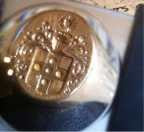Your House In Winter
What is the building science behind understanding and ending draftiness in a house? The image below diagrams the movement of air through all the little cracks, joints and openings between your home and the outdoors. Small openings in utility pipes, poorly weather-stripped doors and windows, can lights, and wiring can add up to a significant source of leakage. These air leaks cause the discomfort of draftiness and a significant increase in energy use as your heating and cooling systems work harder to compensate for these losses of conditioned air.
The benefit of a Home Energy Assessment or Energy Audit is the identification of these kinds of issues with specificity. This is often called 'the low hanging fruit' in the energy efficiency world. Making these kinds of changes are cost effective, with short term pay back.
The image above shows an air-sealed pipe penetration in an attic. This pipe goes through a hole, from the basement to the attic, that is larger than the outside diameter of the pipe. This is one of the many small holes contributing to the stack effect. By sealing this with closed cell foam and then using insulation, the home will be less drafty, more comfortable and more energy efficient.
Here are a few local resources for contractors and financing related to doing this kind of work:
http://www.stlouiscountysaves.com/
http://www.missouribotanicalgarden.org/sustainability-conservation/sustainable-living/at-home/hpwes.aspx
http://www.illinoishomeperformance.org/
One last note: I do not do this kind of work for a living and I have nothing for sale.




<< Home